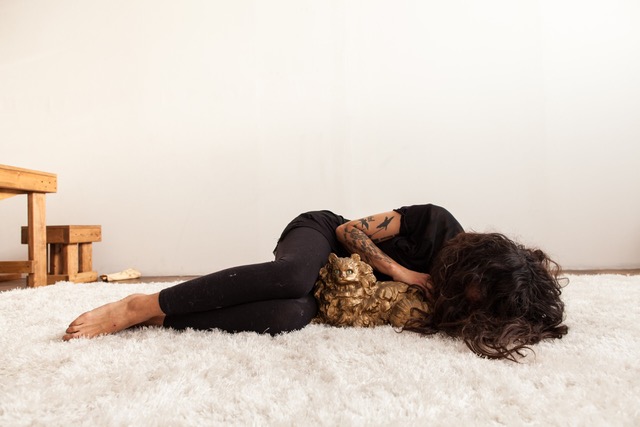Artist Interview with Julie Tolentino and Dr. Meredith Lee
Talk description forthcoming!
Julie Tolentino (she/they interchangeably) is a Filipina-Salvadorean artist whose performance/installation practice explores the interstitial spaces of race, gender, relationality, and the archive. Expanding notions of durational, erotic practices, site, and movement, their collaborative projects include performance, installation, video, devised objects, scent, soundscapes, and texts drawn from essential outside learning spaces of activism, alterity, advocacy, loss, and caregiving.
Solo and group exhibitions include The New Museum The Kitchen, Participant, Inc., Performance Space New York, Aspen Art Museum, Nevada Art Museum, Museum of Contemporary Art-Macedonia, Thessaloniki Biennial, Pact Zollverein, House of World Cultures-Berlin, Theaterworks-Singapore, Papaya Arts-Manila, Los Angeles Contemporary Exhibitions-LACE, The Lab, Yerba Buena Center for the Arts, homeLA, Volume, the Bridge Project. Interdisciplinary projects include Visual AIDS Duets book series with Kia LaBeija; Movements in Blue with the What Would An HIV Doula Do? Collective; Archive in Dirt 2018, the Lesbian AIDS Project Women’s Safer Sex Handbook with Cynthia Madansky; and The Sky Remains The Same, a lifetime body-as-archive project since 2006. She is part of the 2022 Whitney Biennial, with Ivy Kwan Arce contributing a light and glass installation, as well as durational performance (with Stosh Fila Robert Crouch) and a public program focused on the work of the What Would An HIV Doula Do? collective.
Series Description
Cultural Studies has often been framed as a method of approach, a way of understanding and interpreting the relationship between cultural narratives and social and political institutions with particular attention to questions of power and resistance. The past few decades have seen several challenges to this method, from the new materialist critique of the linguistic turn to post-critical and auto-theoretical emphases on aesthetics, affect, and memoir. These movements have been especially central to work in queer studies and queer of color critique, most centrally expressed in Eve Kosofsky Sedgwick’s complaint about the stultifying sameness of approach in queer theoretical writing and its mistaken fidelity to exposure and persuasion as activist modes. These challenges have broadened the scope of humanities research, taking in archives formerly left to the sciences and modes of thought once considered too creative to count as academic arguments. The resulting profusion of subjects and styles reflects the robustness of our field in a way often overlooked by the so-called method wars.
This year, Culture Nights seeks to celebrate and enrich our work on how we write and what we write about with a series of meetings that push us beyond the form of scholarly writing. How can we understand these forms as producing criticism, and what sort of criticism do they produce? Our series invites scholars whose works have taken the form of films, pamphlets, and how-to books, archival and visual curation, plastic and fabric art practices, and event-creation, to discuss how (and whether!) they see their work as forms of criticism. As a way of putting our interests into practice, we will encourage presentations that experiment with form and media, including film screenings, interviews, readings, and collaborative workshops.


